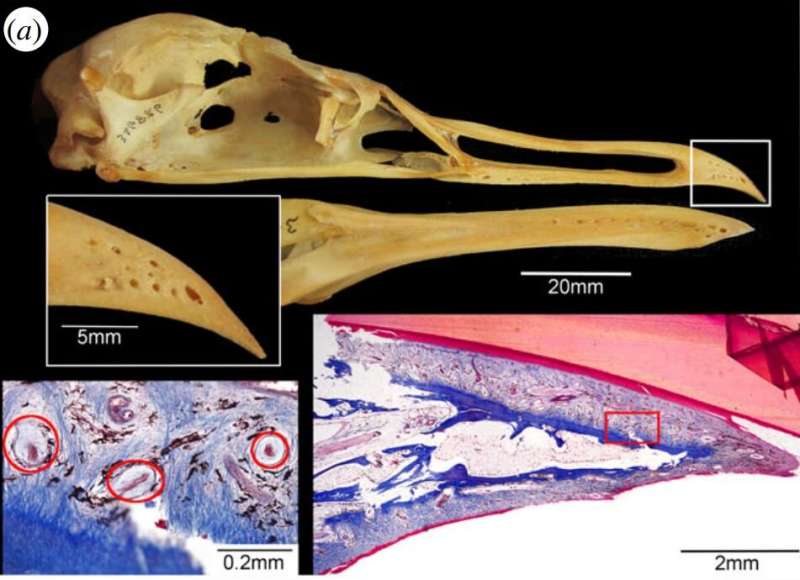December 8, 2020 report
Study: Prehistoric birds used touch-sensing organs in their beaks to find food

A trio of researchers, two with the University of Cape Town, the other the University of the Witwatersrand has found evidence that suggests wetland-dwelling lithornithids from the Cretaceous, likely used remote touch to find food. In their paper published in Proceedings of the Royal Society B, C. J. du Toit, A. Chinsamy and S. J. Cunningham describe their study of remote touch in modern and ancient birds.
Prior research has shown that some foraging palaeognathous (such as kiwi) and neognathous (such as shorebirds and ibises) have what is described as "remote touch"—sensory organs in their beaks that allow them to feel the movement of prey in the ground. This sixth sense comes courtesy of Herbst corpuscles found in pits in the tip of the birds' beaks. Prior research has also shown that some non-foraging birds such as emus and ostriches have similar organs in their beaks—but they do not provide any feedback to the bird's brains. In this new effort, the researchers wondered if the sense organs in the non-foragers were a clue: the birds that had them may have had a common ancestor.
To find out if that might be the case, the researchers obtained hundreds of samples of bird beaks, both modern and ancient. Included in the group were four lithornithid species—extinct birds that lived as far back as the dinosaurs. The researchers first studied the modern birds very carefully to learn more about the structure of their beak sense organs. They then applied what they learned to the study of the ancient birds looking for similarities. And that led them to discovering very similar structures in the lithornithids, which led them to believe that the early birds had the very same kind of sixth sense. It also suggested they were a common ancestor of both the foraging birds with the organs and the non-foraging birds.
The researchers suggest that dinosaurs might have had similar types of organs, making it easier for them to find prey in mud or thick water. They plan to carry on their work, next looking to see if perhaps ancient birds such as the pterosaurs had the sensory organs as well.
More information: C. J. du Toit et al. Cretaceous origins of the vibrotactile bill-tip organ in birds, Proceedings of the Royal Society B: Biological Sciences (2020). DOI: 10.1098/rspb.2020.2322
Journal information: Proceedings of the Royal Society B
© 2020 Science X Network





















